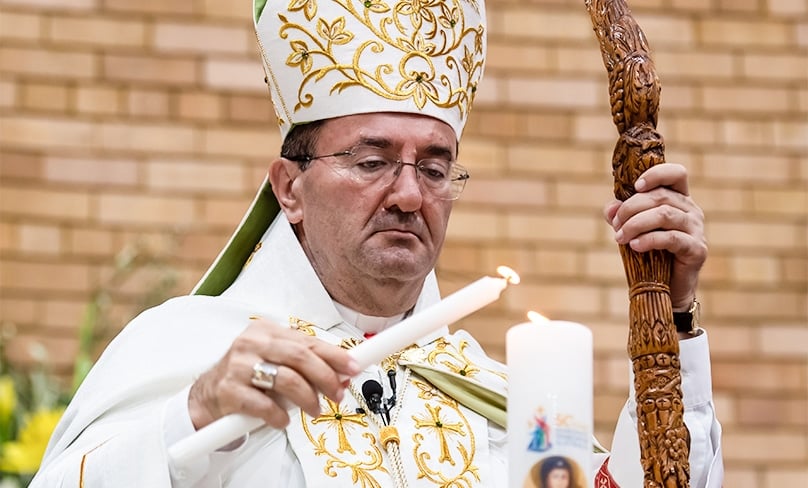
By Fr Geoffrey Abdallah
Australia prides itself on being a multi-cultural country. Unknown to many Australians, the Catholic Church is not only multi-cultural but also multi-ritual.
The Catholic Church consists of 24 autonomous churches which belong to various liturgical traditions: Latin/Roman, Antiochian (West Syriac), Byzantine, Alexandrian, Armenian and Chaldean (East Syriac).
The Maronite Church belongs to the Antiochian (West Syriac) tradition. Vatican II encouraged the Eastern churches “to re-discover and preserve their own patriarchal traditions—liturgy, ecclesiastical discipline, and spiritual heritage.” This includes the liturgical year.
The Maronite liturgical year begins on the first Sunday of November with the consecration and renewal of the church. We are reminded that the church is built on Christ, and we belong to the church, the Bride of Christ. The church is our Eucharistic family.
The first season of the Maronite liturgical year is the Birth of Our Lord. The Maronite Church does not have the season of “Advent” but instead celebrates the joyful announcements and events leading up to the Birth of Our Lord.
The Sundays of this season are: Announcement to Zechariah, Announcement to Mary (Annunciation), Visitation of the Virgin to Elizabeth, Birth of John the Baptiswt, Revelation to Joseph, Genealogy of Jesus, Birth of Our Lord (25 December), Finding of the Lord in the Temple and Circumcision of the Lord Jesus/Day of Peace (1 January).
The second season is the Glorious Epiphany. In the Maronite Church, the feast of the Epiphany (6 January) is the celebration of the Baptism of Our Lord in the Jordan River and not the arrival of the Maji to Bethlehem (celebrated on 28 December).
When Jesus was baptised, the waters of the Jordan were blessed, and the mystery of the Trinity was revealed.
Attached to the end of the Epiphany season are three Sundays/weeks of Commemorations: Commemoration of the Departed Priests, the Righteous and the Just (All Saints Day), and the Faithful Departed (All Souls Day).
The third season of Great Lent begins with Cana Sunday. The miraculous changing of water into wine symbolises that Lent is a time for transformation and change, through prayer, penance and abstinence. The Maronites adopted the distribution of ashes from the Roman Rite and transferred it from Ash Wednesday to Ash Monday, the first day of Lent after Cana Sunday. However, some Maronites still celebrate both days.
The Sundays of Lent focus on the healing miracles: the healing of the leper, the haemorrhaging woman, the prodigal son, the paralytic and the blind man. Lent concludes with the celebration of Hosanna (Palm) Sunday. This is not the same as Passion Sunday in the Roman Rite.
In the Maronite Church, it is a festive and joyful day, as crowds of families and children come to the church and during the procession carry candles and olive branches, proclaiming, “Hosanna! Blessed is he who comes in the name of the Lord!” The evening of Hosanna Sunday marks the arrival of the church at the port of salvation and the beginning of Holy (Passion) Week.
During the fourth season of Holy (Passion) Week, there are various solemn liturgies, including the Rite of the Lamp (Anointing of the Sick) on Holy Wednesday; the Blessing of the Chrism and Holy oils, the Washing of the Feet, and the Mass of the Eucharist on Holy Thursday (Thursday of the Mysteries); the Signing of the Chalice (Pre-Sanctified) and the Adoration of the Cross on Good Friday; the Prayer of Forgiveness (Communal celebration of Reconciliation) on Holy Saturday (Saturday of the Light).
The fifth season is the Glorious Resurrection (Easter). There is no solemn Easter Vigil equivalent to that of the Roman Rite. In the Maronite tradition, there is the celebration of the Rite of Peace during the evening/midnight Masses on the Easter Vigil.
The Sundays during this Easter season recount the resurrection appearances of the Risen Lord. The Sunday after Easter is known as “New Sunday” or “Thomas Sunday” and focuses on “new life”. The Ascension of Our Lord is celebrated on both Thursday (40th Day) and the following Sunday.
The sixth season is Pentecost, the Season of the Holy Spirit. The principal feasts that fall during this long season are Saints Peter and Paul (29 June), Transfiguration of Our Lord (6 August) and Assumption of the Virgin (15 August). There is no “ordinary time” in the Maronite liturgical year.
The seventh and final season is the Exaltation of the Holy Cross, commencing on 14 September and concluding at the end of October. The prayers and Gospels focus on the power of the Cross, the end of the world and the glorious second coming.
Finally, as we begin the new liturgical year in the various rites of the Catholic Church, let us remember that we are not “re-enacting” the life of Jesus of Nazareth, but rather, “making present” and liturgically celebrating the salvific life of Our Lord and Saviour, Jesus Christ, as we are all gradually transformed into his glorious image.
Fr Geoffrey Abdallah is the Dean of Saint Maroun’s Cathedral Redfern.
